Review GSM phone Enol E300
Package:
- Handset
- Charger
- Wire headset
- Strap for a hand
- Manual

Enol E300 is a miniature clamshell with two colour displays and an integrated VGA-camera. The dimensions of the phone are standard for its class (85x43.5x22 mm) and the weight is 95 grams. The design is really original. The upper part is oval and shorter than the lower one. The corners are splay and thus the phone looks smaller than it is. Its body is made of good plastic and the covering is red and lacquered (also a black body colour is available). Fingerprints stay on it but actually they are hardly noticeable. The construction is reliable and we noticed no backlash in the two parts of the clamshell. The device is easy to open and close with one hand.



A coupled volume button is on the top left side and a charger connector on the bottom. Only a headset connector closed with a rubber shutter fixed to the body is placed on the right side.

A rotational VGA-camera is on the top of the phone. Nothing special is possible to say about its construction. The objective is never closed and in all the positions it stays open. In fact there is nothing to worry about since the objective is sunk into the body but anyway the camera could have been hidden to avoid ingress of dust.

A small OLED screen may be seen on the front panel. The resolution is 96x64 pixels (21x15 mm) and 4 colours are shown. The screen of this type doesn't fade in the sun and consumes less energy than STN and TFT ones. But here it serves more a fashion solution but not a necessity. Time and date, information about newly received messages and missed calls are shown on it in the standby mode and at the incoming call two lines - the name (if the number is kept in the phone book) and the number - are displayed.

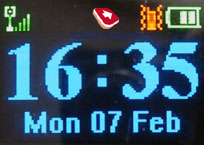

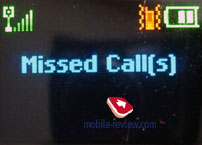
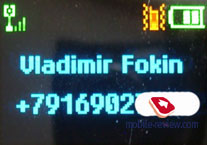
Light indicators are placed on the bottom of the cover that is in some kind a reductive copy of a haptics function realized in Motorola's phones. You won't manage to set the indicator at your wish since it works only at the incoming call.

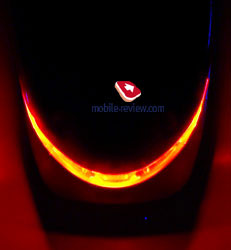

An interface connector is placed not on the bottom end like in the majority of devices but on the back under the battery. The connector is also original and closed with a plastic shutter fixed to the body.

Having opened the phone you'll see the main TFT screen with the resolution of 128x160 pixels (28x35 mm) capable of showing 65000 colours. The quality of the picture is better than in Enol
E400S but still the display is not as good as it should be. It fades in the sun but information can be read.
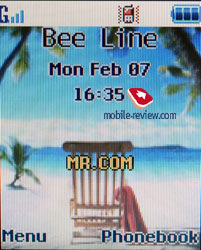
The keypad is made of plastic. Working with the block of control buttons is rather hard due to their small size and the fact it is slightly sank down that is unordinary. A 4D navi button is small and calling a wap-browser is assigned to it. The button does not serve for confirmation and only a left functional key is used for it. Number keys are small and well-distanced that prevents accidental pressures. The blue backlighting is brighter in the edges and dull in the center (that is a central number row - 2, 5, 8, 0).

The battery serves as a back panel at the same time. The fixing mechanism is originally designed. It is represented with two small catches that are rather tight. And thus you'll have to press hard on the battery when plugging it in. Though this has its advantages since there is not backlash and it is hardly to appear in some time. The battery is 700mAh Li-Ion. In Moscow the device worked for 1.5 days in case of 30 minutes of talks and 15-30 minutes of using other functions a day. The maximum working time you may expect is 2 days if using the device not much.

Menu
Entering the menu is possible by pressing the left softkey. The main menu is a row of animated icons. Three icons are shown on the screen at the same time and the selected one is the biggest and placed centrally, moving to the left and to the right is possible. When moving along the main menu the phone slows down a bit and let's shift the blame onto the animation. Submenus are vertical lists. You can use number series for moving along the menu. Localization is not well-taken with letters of different size and words divisions.
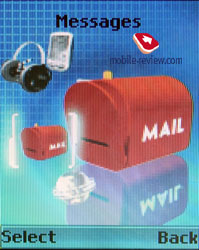 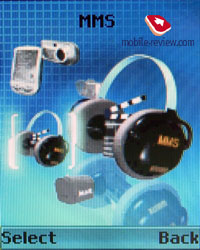
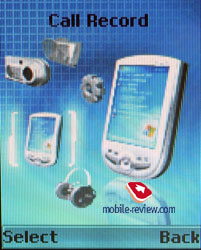 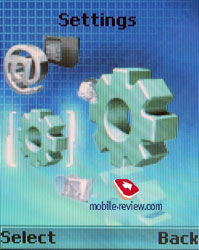
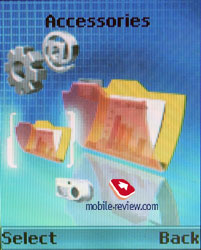 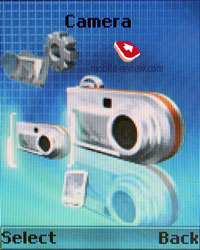
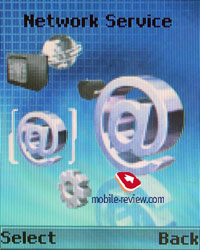 

Phone book. Up to 500 entries may be saved in the internal memory. Each entry may contain a name (14 characters) and up to 3 numbers. A user may be referred to one of the five groups that also may be adjusted by you. Thus you can set the name for a group, assign a melody and an SMS signal. Search by name (numbers from the internal memory and SIM-card one are shown together) or by a group are possible. Up to 10 numbers are at your disposal for fast dialing.
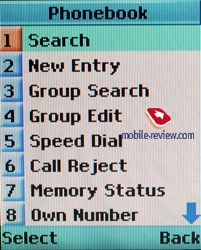 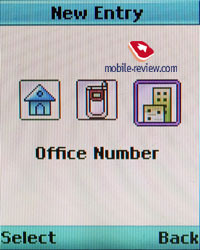
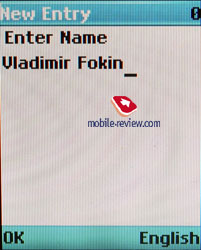 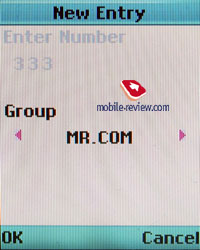
 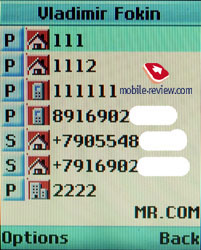
 
 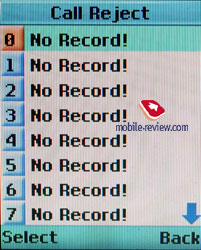
Despite all the ascetic possibilities of the phone book it still has a thing that is very rare for other phones. That is a black list. Up to 10 numbers you don't want to receive calls from may be included into the list. If the number is in the list then when trying to call you the caller will be cut off (before the hootings start).
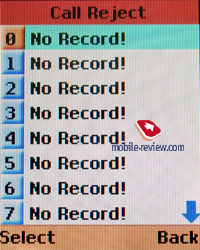
Messages. The device supports EMS and has a set of small pictures (40 pictures), animation (15 items) and a possibility to attach a melody to the message as a result. You may also save and use personal pictures, melodies and animation. About 100 messages besides SIM-card memory may be stored in the internal one. Up to 20 numbers may be included into a mailing list where you can add users one by one or even in a group.
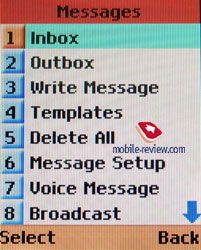 
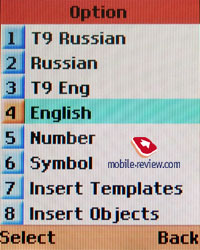 
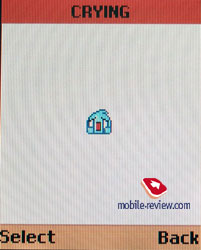 
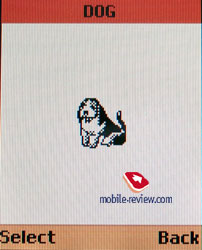 
Russian and English T9 are present in the phone and up to 10 templates may be created.
MMS. Multimedia messages are kept into a separate item. Up to several pages may be created and the limit size of the message is 70 KB. Up to 1 MB of memory is provided for MMS.

Call lists. Everything is traditional here. There is a list of outgoing, incoming and missed calls with date and time; each list may contain 10 entries. Call timers don't show total time but there are separated incoming and outgoing call time.
Organizer. A current month is shown in the calendar and a memo with 15 characters in length may be stored for a day. Several memos may be kept for a day and a signal may be set for each. The dates with memos saved are indicated in another colour. You may set reminders and a scheduler; the only difference is that personal melody can't be set for everyday events.
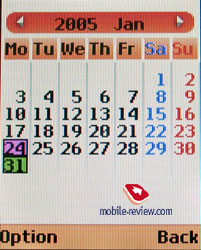
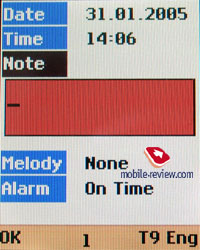 
World time.
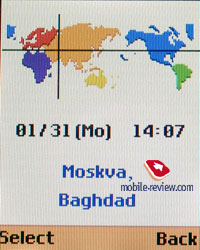
Plain calculator.
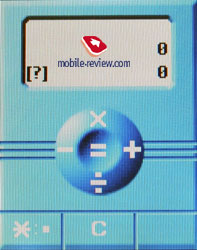
Unit converter.
 
Biorhythms. The device offers to enter your birth date and see your condition for today or a month. And of course, that's not more than a game.
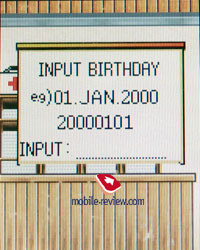 
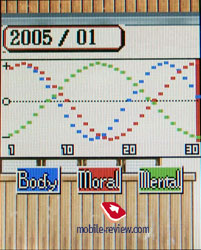
Games. There are two games preinstalled in the phone. They are Minesweeper (a famous computer game) and Puzzle.
 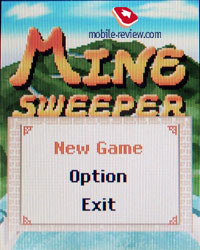
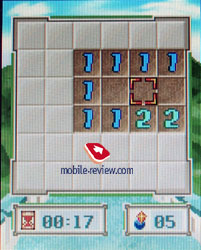 
 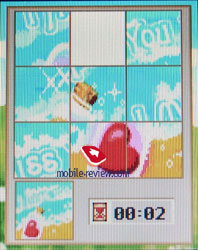
Settings. Everything connected with sound, display and other functions of the device is here.

You may select one of 10 preset pictures for the display, personal text (up to 16 characters) that will be shown on the screen.
 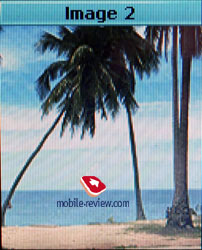
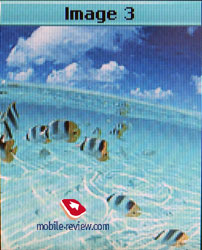 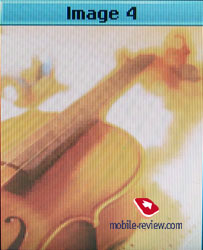
 
 
 
Network services. All the settings connected with the network are here.
WAP. A wap-browser version 2.0 is installed in the phone. The device also supports batch communication (GPRS class 8).
Camera. A VGA-camera is installed in the phone. 800 KB of memory are kept for photos. The taken photos are impossible to transfer to a PC since there is no IrDA and a cable isn't included into the kit. Nevertheless the photos look well on the phone screen.
 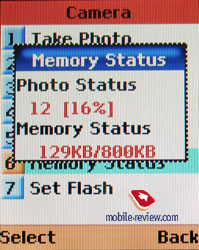
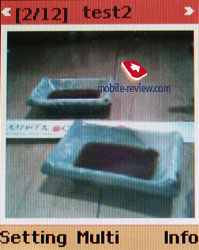 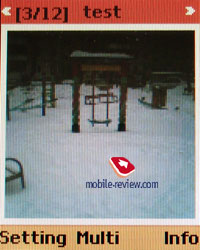
The integrated camera allows photos with the resolution of 160x120, 320x240, and 640x480 pixels. You may apply various effects and frames, set a timer (only 7 seconds). Multishooting for 6 photos with a possibility to choose a speed (normal, average, fast).
 
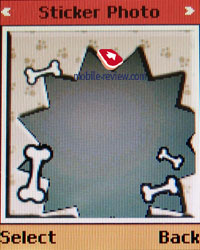 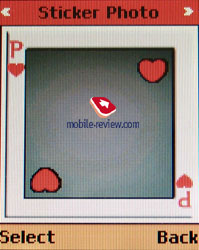
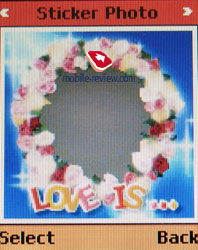 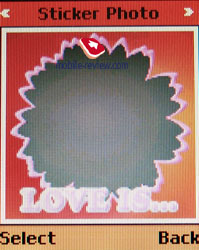
 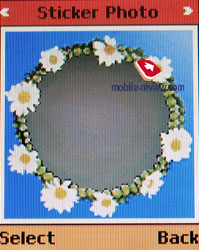
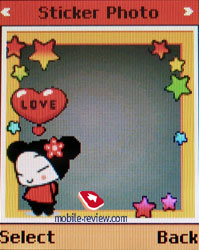 
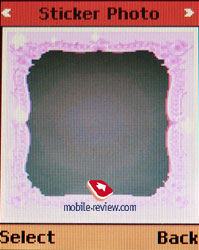 
The photos may be viewed all at the same time or one by one in the photo album. Each photo may be increased or shown a saved info.
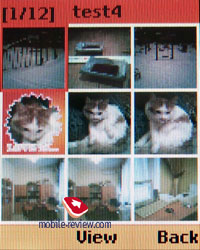 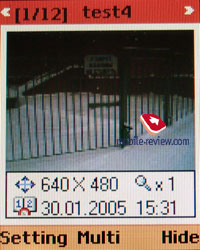
Impressions
The quality and the volume of the sound are average and was not enough in a noisy room. The microphone is not very sensitive and to hear the interlocutor we had to ask him to speak louder. The 40-tones polyphony sounds middling with metallic notes and the preinstalled melodies sound loud the call is hard to miss. And you shouldn't hope for the vibra since it's very low in power.
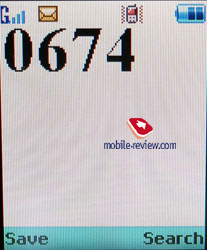 
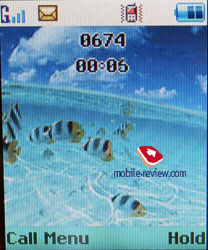 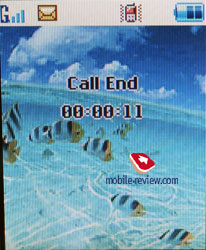
The device is mainly intended for women especially the red one. The number of man owing the device will evidently be much less since small size and the design exquisite in some kind tell upon. The battery turned out to be a weakness of the phone thus it will serve only for a day if used actively. The device is functionally poor like the majority of fashion phones by Korean manufacturers.
Today an average price for the device is about 270 USD. It is evidently overpriced and the price of 200 USD seems more appropriate. That is true since Samsung phones of about a similar class that are much better in the screen quality, polyphony and other functions cost about 300 USD.
Melody samples (mp3, 324 KB)
Vladimir Fokin ([email protected])
Translated by Maria Mitina ([email protected])
Published - 11 February 2005
Have something to add?! Write us... [email protected]
|





























































































